Nicolas Marsal
Human action recognition with a large-scale brain-inspired photonic computer
Apr 06, 2020
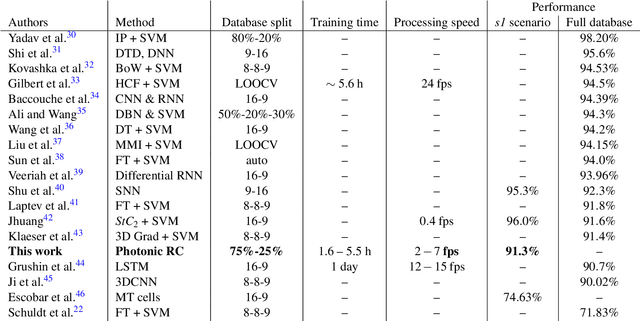
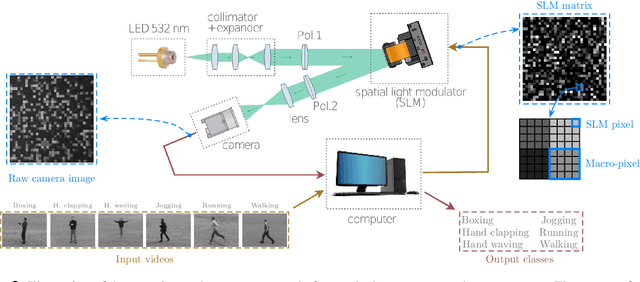

Abstract:The recognition of human actions in video streams is a challenging task in computer vision, with cardinal applications in e.g. brain-computer interface and surveillance. Deep learning has shown remarkable results recently, but can be found hard to use in practice, as its training requires large datasets and special purpose, energy-consuming hardware. In this work, we propose a scalable photonic neuro-inspired architecture based on the reservoir computing paradigm, capable of recognising video-based human actions with state-of-the-art accuracy. Our experimental optical setup comprises off-the-shelf components, and implements a large parallel recurrent neural network that is easy to train and can be scaled up to hundreds of thousands of nodes. This work paves the way towards simply reconfigurable and energy-efficient photonic information processing systems for real-time video processing.
* Authors' version before final reviews (12 pages, 4 figures)
Large-scale spatiotemporal photonic reservoir computer for image classification
Apr 06, 2020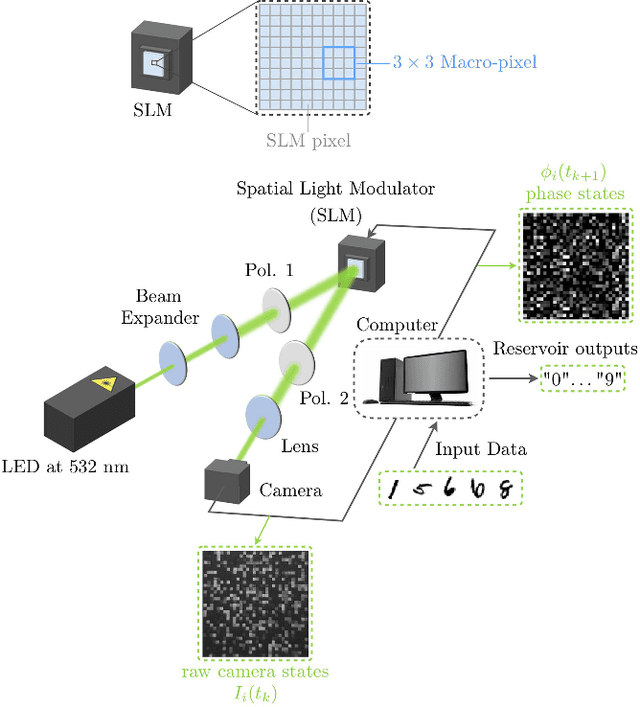
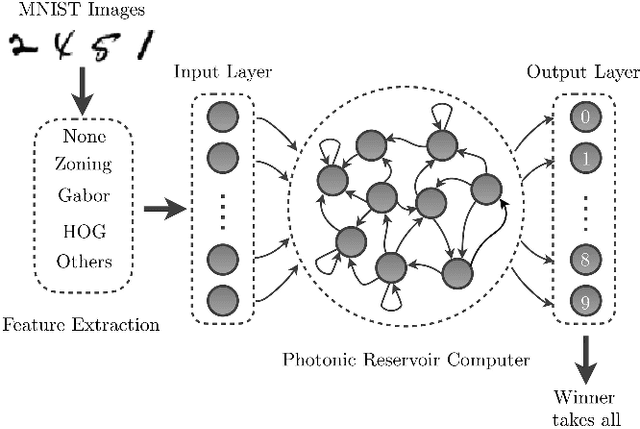
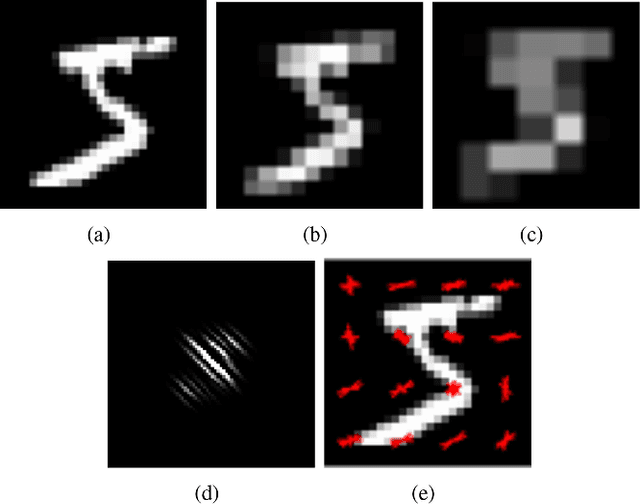
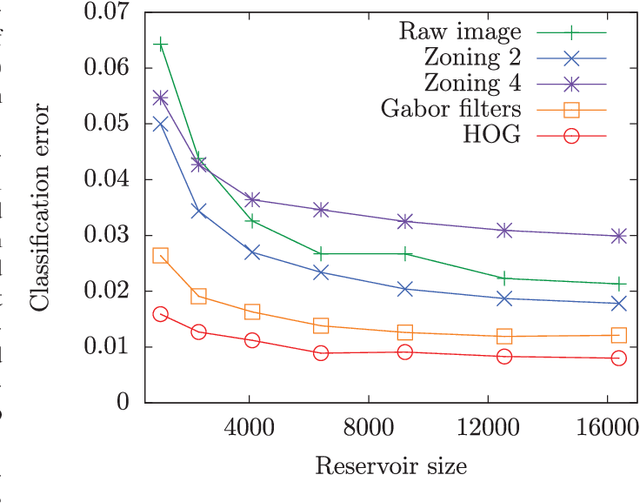
Abstract:We propose a scalable photonic architecture for implementation of feedforward and recurrent neural networks to perform the classification of handwritten digits from the MNIST database. Our experiment exploits off-the-shelf optical and electronic components to currently achieve a network size of 16,384 nodes. Both network types are designed within the the reservoir computing paradigm with randomly weighted input and hidden layers. Using various feature extraction techniques (e.g. histograms of oriented gradients, zoning, Gabor filters) and a simple training procedure consisting of linear regression and winner-takes-all decision strategy, we demonstrate numerically and experimentally that a feedforward network allows for classification error rate of 1%, which is at the state-of-the-art for experimental implementations and remains competitive with more advanced algorithmic approaches. We also investigate recurrent networks in numerical simulations by explicitly activating the temporal dynamics, and predict a performance improvement over the feedforward configuration.
* 12 pages, 9 figures
Bayesian optimisation of large-scale photonic reservoir computers
Apr 06, 2020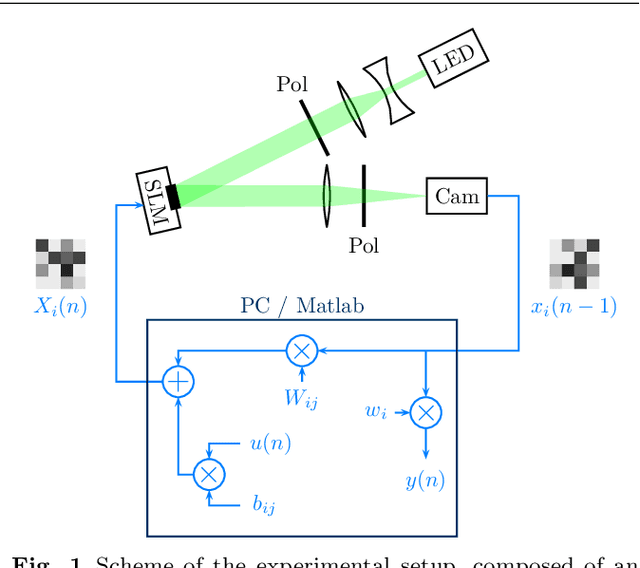



Abstract:Introduction. Reservoir computing is a growing paradigm for simplified training of recurrent neural networks, with a high potential for hardware implementations. Numerous experiments in optics and electronics yield comparable performance to digital state-of-the-art algorithms. Many of the most recent works in the field focus on large-scale photonic systems, with tens of thousands of physical nodes and arbitrary interconnections. While this trend significantly expands the potential applications of photonic reservoir computing, it also complicates the optimisation of the high number of hyper-parameters of the system. Methods. In this work, we propose the use of Bayesian optimisation for efficient exploration of the hyper-parameter space in a minimum number of iteration. Results. We test this approach on a previously reported large-scale experimental system, compare it to the commonly used grid search, and report notable improvements in performance and the number of experimental iterations required to optimise the hyper-parameters. Conclusion. Bayesian optimisation thus has the potential to become the standard method for tuning the hyper-parameters in photonic reservoir computing.
 Add to Chrome
Add to Chrome Add to Firefox
Add to Firefox Add to Edge
Add to Edge